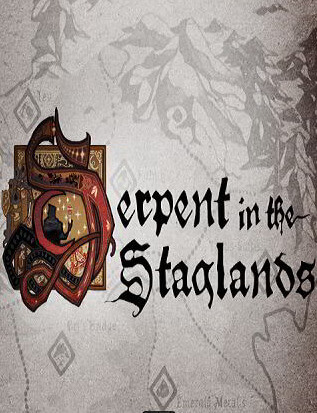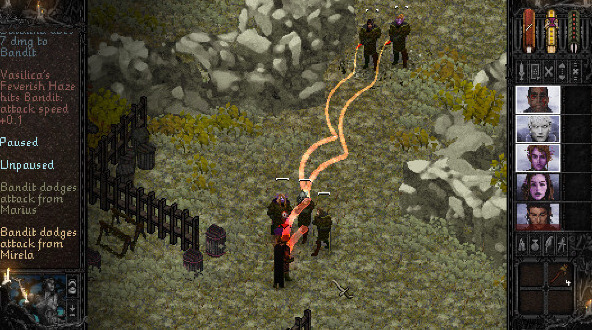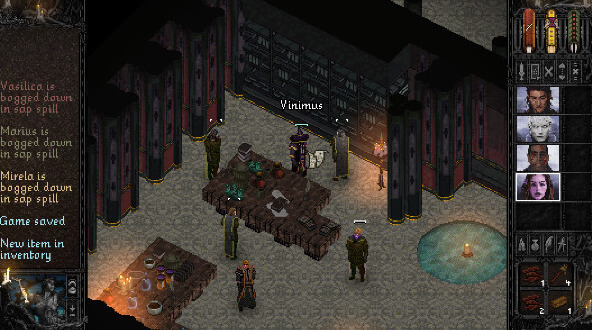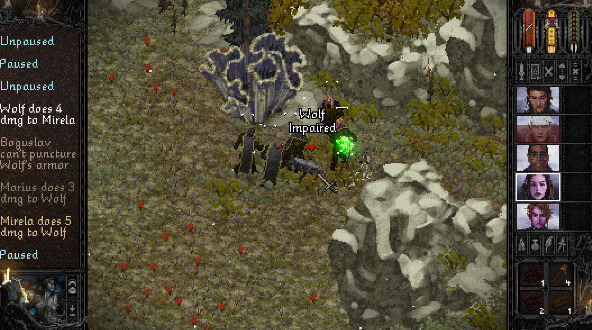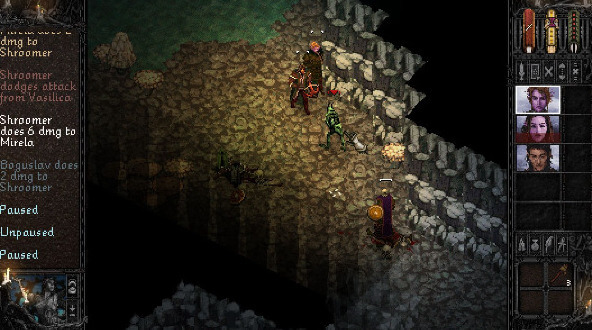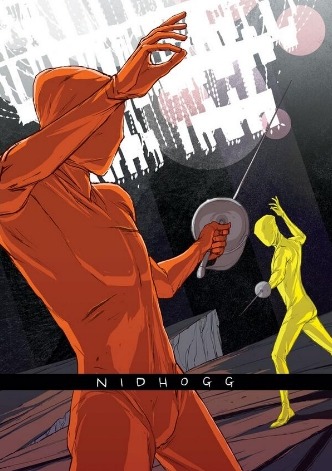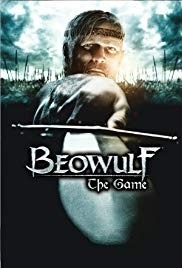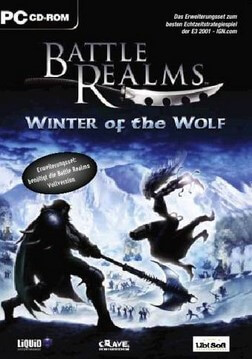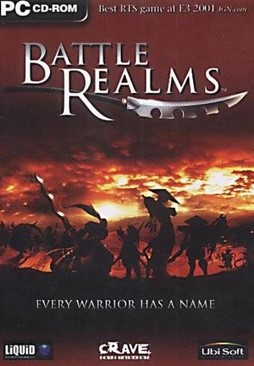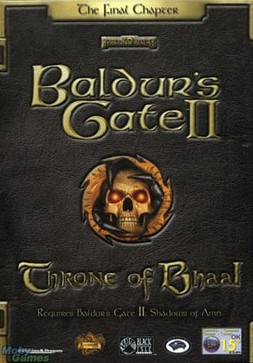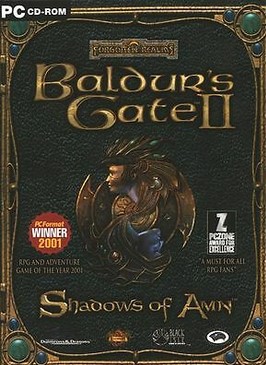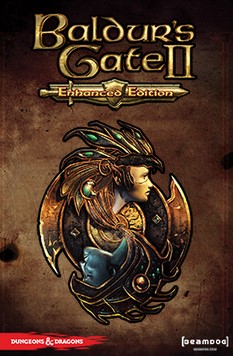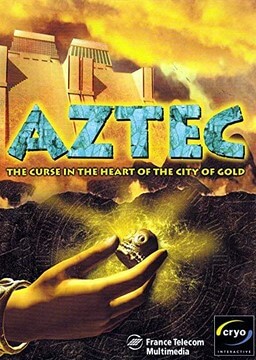The game features a classless role-playing system reminiscent of the SPECIAL system used in Fallout. The player is free to create builds using any combination of the magic, combat and aptitude skills available. You create your character at the start of the game, and might optionally create up the five more. Alternatively, you recruit companions you meet in the game world. A noteworthy feature is the ability to bind the souls of these companions to the will of the player character, making sure that they will not leave your party later on. Similarly reminiscent of Fallout, the game allows open world sandbox exploration, meaning that the player is free to move about the map as he chooses and solve quests in any order desired. The game also features a non-linear storyline, with multiple endings according to the choices made by the player. Combat has been noted by reviewers to be "especially brutal". It uses real-time with pause, as popularized by Infinity Engine games such as Baldur's Gate and Icewind Dale, as well as the more recent Pillars of Eternity. The player is encouraged to pause often to take tactical decisions, using the abilities of the different party members. While one reviewer noted that he died "repeatedly despite learning how to manage combat", he nevertheless described combat as "strategic" and "fun".
Setting
Serpent in the Staglands takes place in the world of Vol. Despite being a fantasy world, it is inspired by the actual Bronze Age and heavily influenced by medieval Transylvania. Despite the presence of classic fantasy elements such as magic, the game is known for its gritty, realistic and dark tone. This makes many gamers draw parallels to Darklands.
"Featuring a chosen party of five, you take the role of Necholai, a minor god of a celestial body, who descends to the Staglands for a moonlit festival only to find his way home blocked and immortality slipping out of his grasp. Seeking answers and aid, he takes on a mortal body and the guise of a traveling Spicer".
Development
Serpent in the Staglands was developed by Whalenought Studios, which is a husband-and-wife team consisting of Joe and Hannah. Joe takes care of art and animation duties, while Hannah is responsible for programming and writing. While based in Chicago during development, the company moved to Seattle after its release. The initial game design for Serpent in the Staglands started in winter 2013. The Kickstarter campaign ran over a 30-day period from 27 March 2014 until 26 April 2014. It exceeded the initial $10,000 funding goal, allowing for several streach goals to be reached including the expansion pack. Serpent in the Staglands was created using Unity 3D. Parts of the Kickstarter funds went towards buying Unity 3D Pro, which featured more efficient path finding technology and optimized lighting solutions.
Joe and Hannah appeared on Matt Chat episodes 284-286 to discuss the making the game.
Reception
While Serpent in the Staglands was initially "almost completely ignored by the specialized press" at the time of release, reviews and impressions from (mainly smaller) gaming sites have since appeared.
Niche Gamer awarded the game 8/10. He finds that "deep below all of that frustration is an amazing RPG that deserves to be played". He highlights the main positive points as the story and the freedom when forming a party. He mentions the general difficulty of the game, saying "like any good European CRPG, Staglands isn’t looking to hold your hand or babysit you". Combat is "especially brutal" with "no scaling or helpful placement of adequately leveled enemies". He notes that the game requires some time to get into, speaking of a "“five hour wall” that surrounds the game, since the early going is so rough that you need to have almost superhuman patience to overcome it". Noting the weaker points of the game, he states that there are "some incredibly ancient gameplay conventions that even I found intolerable at times", notably criticizing the lack of features on the journal function and "not being able to resurrect fallen allies, not getting any clues as to whether killing an NPC will ruin your quest, and not being told if an enemy requires a certain level of weapon to do damage against it".
True PC Gaming lauds the variety of character creation options, emphasizing that "there’s a nice selection of races and subcultures to pick from, with unique bonuses attached to each. These choices are supplied with a staggering amount of back history for both alike". He also notes that "Serpent in the Staglands is one gorgeous game", and that "the music composition is fantastic and perfectly suits both the feel and art style of the game". He is critical about the user interface, however, stating that the "old fashioned HUD tries to fit a large number of buttons so close together that it often confused me what each one did, even after many times using them" and misses the option to compare items. He concludes; "I’ve played some difficult games in my time, but I can’t remember any that left my lead character crumpled in a bloody heap on the cold ground so frequently as Serpent in the Staglands. It’s quite a task to nail down a solid conclusion about this game, as I feel like the overall enjoyment experienced will vary drastically based on the type of player. That being said, there’s much to be appreciated by all audiences, and I wholeheartedly recommend traditional RPG fans to buy this game now".
Richard Cobbett describes the game in an article for Rock, Paper, Shotgun. He finds that "the needlessly frustrating opening" is to the game's detriment because stat descriptions "largely assumes you’re coming to the game from things like Dungeons and Dragons". He goes on to say that "this game painfully, desperately needs a Getting Started type guide. There’s a manual, which is not optional, but even that is a weak introduction". To the game's credit, he goes on to say that "the frustrating/good thing is that behind all of this waits a surprisingly good RPG. It’s bursting with carefully designed areas and clever ideas, as well some really fun gimmicks. You can start with just yourself, or use your god powers to create a few extra empty shells to back you up until you find suitable NPCs to fill slots. When they’re recruited, you can either take them warts and all or use your power to just straight up steal their souls, removing their tiresome free will". In conclusion, he finds that "there’s a lot of really good stuff here, and the game is mostly excellent, but the path to actually getting into the damn thing is far more frustrating than it is rewarding. Once past it, the amount of freedom it offers in everything from character builds to your path around an open world designed to reward exploration is all great, and knowing the carrot is there does help. Even so, do be sure you have the dedication to keep chasing it while being brutally beaten with the stick".
